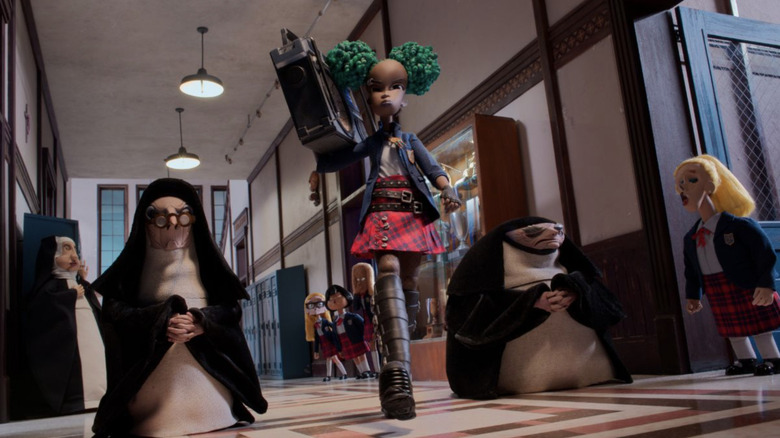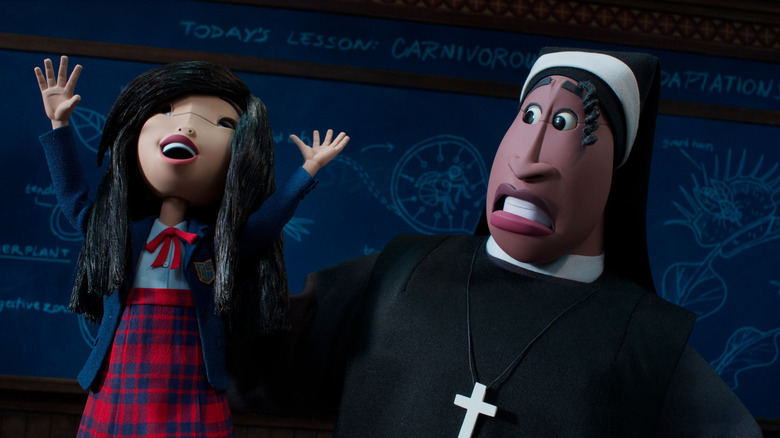How Jordan Peele Changed The Characters Of Henry Selick's Wendell And Wild [Exclusive]
Stop-motion filmmaking auteur Henry Selick is back in action with his first feature since "Coraline" — the Netflix film "Wendell and Wild," based on the unpublished book he co-wrote with Clay McLeod Chapman. The man who gave us "The Nightmare Before Christmas," "James and the Giant Peach," and "Monkeybone" joined forces with maverick filmmaker Jordan Peele on the project, just before Peele became an Oscar-winner and changed the horror game forever with "Get Out."
"Wendell and Wild" is about an angry young Black punk 13-year-old girl named Kat ("Ironheart" and "This is Us" star Lyric Ross) who crosses paths with the two titular demons (Keegan-Michael Key, Peele) who need her help escaping the hellish underworld and crossing over into the land of the living. Pairing up Selick with Peele seems like a no-brainer for a successful horror story, but before the success of "Get Out," the combination was still a risk. According to a set visit attended by /Film's own Jacob Hall, Peele had urged Selick to pitch the project before "Get Out" dropped in theaters, fearful that if the film didn't perform well, it would hurt the future of "Wendell and Wild."
Of course, "Get Out" would go on to become one of the most important horror films in history, which meant the sky was the limit for "Wendell and Wild." Peele's connection to the film made the stop-motion feature one of the hottest new projects in Hollywood, but his influence on the story didn't stop there. As it turns out, it was Peele's idea to focus the story on Kat as the protagonist, instead of the demon-destroying nun Sister Helly the way it is in the book.
The impact of one important change
Selick told /Film's Rafael Motamayor in a new interview that Peele was very passionate about making Kat the protagonist, and helped curb his worries that people would think a stop-motion horror film about a teenage girl would feel too similar to "Coraline." Fortunately, Peele told him, "Oh no, no one will confuse it with 'Coraline' if she's a person of color, someone that I would've wanted to see in a film when I was a kid." From that moment on, Selick realized that changing the focus to be on Kat meant he could change anything he wanted. "It was just like, 'I want to change all the casting of the film,'" he said.
Selick had made casting changes before, even when adapting Neil Gaiman's "Coraline." Selick said that the character Bobinsky, who is known for his blue skin, was originally white. "He performs on the rooftop and I was so tired of all these white people," Selick tells us. "I just made him blue." The shifting of the skintone away from a defaulted whiteness allowed for richer characterizations and a more interesting aesthetic. "Just artistically, artistically, I thought, 'Oh, it'd be great to have all these different skin tones,'" he said. "And then story-wise, it fell into place and it felt honest. This is what's right for this story." Fortunately the same honesty has been applied to "Wendell and Wild," which is a film filled with an incredibly diverse cast of humans and demons alike.
"Wendell and Wild" debuts on Netflix on October 28, 2022.

